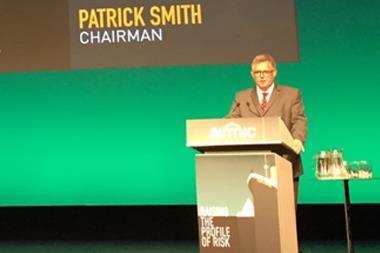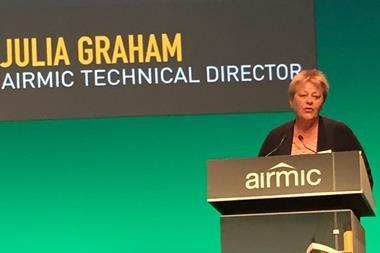Airmic chief executive John Hurrell opened the association’s annual conference in Liverpool by telling more than 900 delegates that risk managers must put their heads above the parapet in order to raise the profile of the discipline

Opening Airmic’s annual conference in Liverpool this afternoon, chief executive John Hurrell said the campaign to put risk management and insurance firmly on boardroom agendas has made significant advances in the past 12 months. He called on risk managers, brokers and insurers to put their heads above the parapet, but hailed progress made so far on raising the profile of risk and insurance.
Drawing on findings from several reports that are due to launch at the conference this afternoon, Hurrell urged more than 900 delegates to work together to move risk management up the corporate risk ladder.
He added that there are “two fronts to be fought”: the ‘air war’, where Airmic seeks to influence senior decision makers beyond its membership and the ‘ground war’, where it provides risk managers with the knowledge and resources to gain influence.
Hurrell cited the guidance on risk management from the Financial Reporting Council, which calls on directors to take greater responsibility for risk management. He described the guidance, for which Airmic was consulted, as “the perfect opportunity for risk managers to step up and support their boards”.
Speaking to StrategicRISK, Hurrell said: “Risk managers have to recognise that, in today’s globalised business world, there is timely opportunity for them to put their heads above the parapet and raise the profile of risk. The profile of risk can be improved in two key areas: insurance and risk management.
“First, on insurance: the longstanding soft insurance market has tended to undervalue and commoditise insurance – and insurance is far from being a commodity. Insurance is absolutely an essential piece of financial support for organisations and, the industry – the risk managers, brokers, and insurers – has to raise its game to demonstrate the true value of insurance.
“One of the deliverables at the conference will be a joint paper on the materiality of insurance that Airmic is publishing with PwC.
“Second, on risk management: raising the profi le of risk is the subject of a joint report by Airmic and Tomorrow’s Company as well as a related report unveiled today that provides a practical road map for risk managers on how to achieve resilience and support their boards.
“Business models are evolving rapidly and more than ever before, boards need to understand the complex interconnectivity of global risks.
“However, the problem within most organisations is that departments operate in silos: treasury does not spend enough time speaking to legal, which does not spend a lot of time talking to HR about all those interconnected risks.
“Frankly, when a business crisis occurs, it is always the board that carries the blame.
“That is why Airmic is calling for senior executive risk leaders who are not risk owners but who can act as a catalyst to bring all of those business functions together into a cohesive risk assessment for the board’s consideration.”
Connecting the dots
Hurrell then moved on to reveal plans of a new report that the association will publish next year. The report aims to “connect the dots” and identify the factors that lead to successful risk management.
Hurrell said: “We asked ourselves what connects all of the bad [things] that happened in the case studies in Roads to ruin with all the good things of Roads to resilience and the recently published Tomorrow’s risk leadership. The connecting piece is people – behaviour and culture.
“This does not only concern the people employed within the business but the extended supply chain of contractors.
“[Airmic is] going to conduct research to identify the drivers that lead to effective risk management based on how people are being managed. [The association] will look at connecting HR departments and the finance function with risk units. The report will touch on ethics, staff retention and business performance.
“The next two or three steps will be to finalise the scope of the report, what we want the product at the end to inform on, who will be our research partner and who will be our commercial partners.”
Airmic aims to publish this report at its annual conference next year in Harrogate.
Concluding his speech, Hurrell said that Airmic, its members and the wider market really can and are contributing to progress. “This is a tremendous time for our profession…Between us all we will continue to make a difference – and that’s a promise.”



















No comments yet